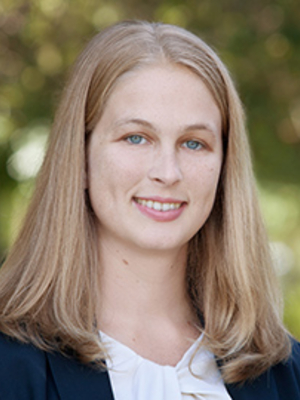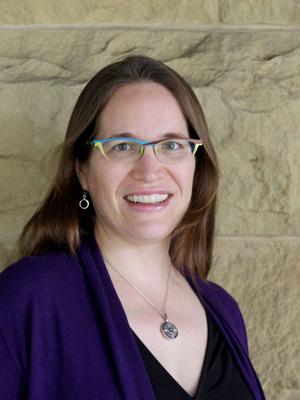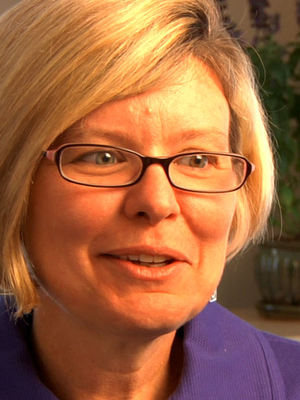Economic Inclusion Lab
Studying innovative cash-based interventions – including guaranteed income and baby bonds – to understand their promise for building a more inclusive economy
With income and wealth inequality in the U.S. at near-record levels, it’s important to consider interventions that directly reduce inequality and that aim to establish minimum income and wealth floors. Direct cash supplements to income, such as guaranteed income (GI) or basic income – and parallel supplements to wealth, such as baby bonds – are a potentially powerful approach. CPI’s Economic Inclusion Lab studies the effects of such cash policies on poverty, wealth inequality, and other outcomes.
One of the Center’s major projects examines the effects of California’s state-funded guaranteed income pilots on health outcomes, a collaboration with David Rehkopf (Stanford Center for Population Health Sciences), Melissa Bondy (Stanford Department of Epidemiology and Population Health), and other faculty at Stanford and other institutions.
Our capacity in the Economic Inclusion area expanded in 2023 when the Stanford Basic Income Lab (BIL) became part of the Center on Poverty and Inequality. Founded by former Stanford philosophy professor Juliana Bidadanure, who remains a Senior Advisor to the lab, BIL serves as a leading online repository of data about basic income programs in the US and globally. BIL also convenes stakeholders to examine the politics, philosophy, economics, and implementation of basic income and related cash policies, and developed the well-known “basic income toolkit” that’s informed the design and implementation of pilots and experiments around the world.
CPI also has an active research agenda examining cash-based strategies to address wealth inequality – such as baby bonds. By providing children with trust funds that can be used to pay for college, start a business, buy a home, or support other investments during the transition to adulthood, baby bonds aim to make it possible for children born into low-wealth families to access opportunities that are typically closed off to them. The Center is partnering, for example, with Darrick Hamilton and other scholars at the New School Institute on Race, Power, & Political Economy to examine whether wealth and income floors, when enacted together, may have synergistic effects. CPI’s Faculty Director David Grusky and Executive Director Sara Kimberlin also serve on the Advisory Working Group supporting the implementation of California’s recently launched state-funded baby bonds initiative, the California HOPE for Children Trust Account Program.
Exploring patterns and drivers of social mobility using linked administrative and survey data
The United States is supposed to be a “land of opportunity” in which a child’s well-being, career opportunities, and future income are not determined by how well-off their parents are. The purpose of CPI’s Social Mobility Lab is to understand how well this commitment to equal opportunity is being met – including for different racial and ethnic groups, for children born into different types of neighborhoods, and for immigrants to the U.S.
Using large linked administrative datasets, CPI is building new social mobility models that paint a comprehensive “mobility portrait” of people’s lives. This research examines different types of mobility simultaneously, such as income, earnings, wealth, and occupation. Some questions we are exploring include how likely children are to enter the same specific occupation as their parents (relating to the “nepo-babies” phenomenon) – as well as how much conventional studies of racial-ethnic differences in mobility may conceal substantial heterogeneity within broad racial-ethnic groups. Working in collaboration with economists, sociologists, and statisticians across the country, this research ultimately aims to provide a more comprehensive set of mobility measures than has been possible up to now.
CPI also partners with Opportunity Insights, the Census Bureau, and many leading scholars (including Raj Chetty, John Friedman, Katie Genadek, and others) in their ongoing work to develop the American Opportunity Study (AOS). The AOS, which is a large-scale panel built by linking Decennial Census and tax data from 1960 to the present day, will allow for new studies of mobility, new studies of social and demographic processes, and new capacities to carry out quasi-experimental analyses of social programs over the last half-century.
Developing an innovative data collection platform for qualitative and mixed-methods research within the U.S. and globally
The U.S. has well-developed research and data tools for monitoring the physical and mental health of the country, but not for monitoring its social health. We need a new monitoring platform to track and uncover emerging challenges in this arena, such as experiences related to racial and gender conflict and discrimination; social isolation and loneliness; misinformation and toxic and conspiratorial beliefs; meaninglessness and distrust; and social deprivation in its many forms.
CPI’s Voices Lab addresses this need through the American Voices Project (AVP), an innovative new research infrastructure for collecting and analyzing mixed-methods data across diverse research topics. The AVP is the country’s first large-sample, nationally representative, mixed methods data platform that makes it possible to discover what people are thinking, feeling, doing, and experiencing. The core of the AVP’s innovative methodology is long-form immersive conversations with individual respondents that promote trust and authentic sharing about one’s family, work, friends, politics, religion, and everyday experiences. These conversations are then followed up with more conventional survey questions and linked to administrative data (when respondents consent to linkage).
This approach is a useful supplement to data collected through conventional surveys because it uncovers feelings and experiences that survey-designers hadn’t thought to elicit and that survey-takers may not be aware of or willing to disclose on a one-off questionnaire. The AVP also complements conventional qualitative research because it is based on large representative samples, allows for secondary analysis, and thus energizes a new cumulative form of qualitative analysis.
The first round of AVP interviewing, funded by a large consortium of top foundations, was completed in 2022. We are now piloting a new public data analysis and dissemination platform in which qualified researchers apply for access to the AVP data, analyze the deidentified data on a secure server, and then write and release research reports (after disclosure avoidance review to ensure that confidentiality is fully protected). The Russell Sage Foundation has released two special issues of the Russell Sage Foundation Journal of the Social Sciences (Part I and Part II) devoted to this initial round of analyses – and see also this series of AVP-based Crisis Monitoring Reports, focused on Americans' experiences as the COVID-19 pandemic unfolded.
CPI’s Voices Lab is currently building a new and improved version of the AVP to serve as a permanent public-use research platform. We are also supporting an international initiative to build a cross-national immersive interviewing platform. This work is supported by a broad interdisciplinary team of scholars.
Funders of CPI’s work in this area have included the Annie E. Casey Foundation; the Bill & Melinda Gates Foundation; the Center for Research on Child Wellbeing at Princeton University; the Chan Zuckerberg Initiative; the David and Lucile Packard Foundation; the Federal Reserve Banks of Atlanta, Boston, Cleveland, Dallas, New York, Philadelphia, Richmond, and San Francisco; the Ford Foundation; The James Irvine Foundation; the JPB Foundation; the National Science Foundation; the Pritzker Family Foundation; and the Russell Sage Foundation.
Developing and testing new measurement tools and interventions in a state that’s committed to bold approaches to taking on poverty, inequality, and homelessness
With nearly 40 million residents, California is home to almost 1 in 8 Americans. The state has an ethnic, racial, and immigrant makeup that is unusually diverse, spread across economically and demographically diverse regions. Although California is an economic powerhouse, it consistently ranks as extremely high in poverty, inequality, and homelessness among U.S. states. At the same time, state and local policymakers have committed to building, piloting, and scaling a range of innovative policies and programs that aim to reduce poverty and inequality. As a result, the state has become a key national laboratory for testing new solutions to pressing problems.
CPI’s California Lab is dedicated to facilitating these efforts in collaboration with state and county governments and nonprofit and community leaders. CPI’s work in this area includes:
- The California Poverty Measure (CPM) – This state-specific index of poverty, modeled on the Census Bureau’s Supplemental Poverty Measure, is jointly produced by CPI and the Public Policy Institute of California. CPI is also currently developing a second-generation measure of poverty that uses linked administrative data to measure poverty at a higher resolution, enabling research to understand how households combine different types of income and public supports to meet their basic needs, to identify gaps in the social safety net, and to test the effects of policy on poverty.
- Policy Blueprints – CPI has developed comprehensive recommendations for evidence-based policy strategies that combine upstream (“predistributive”) and downstream (“redistributive”) approaches to addressing poverty and inequality to build a genuinely inclusive economy.
- California Data Dashboard – This online tool, currently in development, will allow state and local stakeholders to track California’s successes and failures in building an inclusive economy across diverse domains.
- Subsidized Employment Lab – In partnership with several California counties, CPI is analyzing the impact of subsidized employment programs and identifying opportunities to improve their reach and effectiveness.
Using big data to understand interactions within social networks and neighborhoods and to develop new interventions to reduce segregation
The networks of social connections in which all people are embedded have profound effects on social and economic mobility, employment, physical and mental health, access to information, participation in sociopolitical and religious life, and many other everyday experiences. Indeed, the country’s most important social problems often take the form of “network problems,” with examples including loneliness, the spread of disease, and unequal access to advantageous social connections. Because healthy networks are critical for social health, it’s important to build research tools that can be used to examine which neighborhoods, social groups, or schools and universities have healthy networks. CPI’s Social Networks Lab is advancing research in this area by developing a nationally-representative “big data” network dataset, drawing on anonymized cellphone data, that includes a rich set of economic, demographic, and other variables.
This dataset can be used to examine the sources of loneliness, the causal effects of neighborhood policy on social interactions, racial and ethnic differences in social interaction, and much more. To date, our team has completed both an early policy study that identified restaurants as a primary source of COVID-19 infections, and a basic science study showing that, contrary to conventional expectations, large cities promote segregation by supporting restaurants, shopping centers, and other venues that are targeted to very narrow socioeconomic groups (such as fancy restaurants for the one percent).
Investigating the prevalence of “noxious” employment contracts that oblige workers to accept high-risk working conditions
How many workers must accept high-risk working conditions because they don’t have the money or leverage to walk away from the job? If a worker has no real choice, due to lack of alternative employment options, and must therefore accept extremely high risks, the employment contract may be considered a “noxious” one. The purpose of CPI’s Noxious Contracts Lab, currently in development, is to uncover occupations that are unusually noxious, to monitor trends in these types of employment situations, and to assess which groups are most at risk of noxious employment. In its current project, the lab is examining the degree to which the pandemic brought on a “noxiousness divide” that split the workforce into two camps, with “essential workers” having no choice but to bear increased risk while remote workers were mainly protected from risk.
Examining the reach and impact of refundable tax credits for low-income households and behavioral responses to tax rate increases (such as “millionaire migration”)
Tax policy is an increasingly important tool for taking on poverty and inequality, particularly through federal and state refundable tax credits that deliver resources to families and individuals with low incomes. CPI is studying the reach and impact of existing and proposed tax credits targeted to low-income tax filers, such as EITCs, child tax credits, and renter’s tax credits. This research builds on CPI’s work on the California Poverty Measure.
Tax policy also determines how much revenue will be available to support public spending priorities, such as poverty- and inequality-reducing initiatives. Understanding behavioral responses to these tax policies is important for effective policy design. For example, if increased taxes cause many individuals to move away from higher-tax areas, these policies will be less effective in raising revenues. CPI’s influential research on “millionaire migration,” based on analysis of administrative tax return data, has helped inform this policy debate.
Identifying and evaluating high-return policies and practices to address homelessness, housing affordability, and access to homeownership
Because housing costs are typically the largest expense in a family or individual’s basic needs budget, housing policy is an especially critical part of the country’s anti-poverty policy. When housing is unaffordable, individuals can be pushed into homelessness, with devastating consequences. At the same time, housing policy is also an important tool to increase access to high-amenity neighborhoods – which in turn facilitates opportunities for upward economic mobility – and to expand opportunities for wealth accumulation. CPI’s research addresses these issues by evaluating and designing innovative programs to address homelessness and housing affordability and to increase homeownership among low-income populations. See also related work in CPI’s Tax Policy Lab (for tax credits) and Economic Inclusion Lab (for baby bonds).
Evaluating and identifying promising evidence-based early childhood interventions
The first few years of a child’s life are a sensitive developmental period during which poverty and other stressors can cause long-lasting harm. This critical period also represents a window of opportunity for carefully targeted policy interventions that can have long-lasting positive impact. CPI has an ongoing stream of research on interventions targeted to young children, such as baby bonds (see also the Economic Inclusion Lab), early childhood training (see also the California Lab), and tax credits (see also the Tax Policy Lab).
Leader: Elizabeth Peters
The continuing decline in prime-age employment interacts with ongoing changes in the structure and composition of low-income families. The relevant trends here include (a) declining marriage rates and increasing cohabitation, (b) increases in nonmarital births and multi-partner fertility, and (c) rising noncustodial parenthood (especially for fathers). These developments all work to weaken the “family safety net” for poor children. In a precarious labor market, a second parent provides backup in difficult times (e.g., extra income, childcare), thus reducing the risks of poverty. The family safety net is in this sense weakening just as the labor market is becoming more precarious. Moreover, because some programs (e.g., EITC) provide higher benefits for custodial parents, the rise of noncustodial parenting undermines the capacity of the formal safety net to step in as the family safety net weakens. These and related changes in family structure have prompted a spate of policy proposals, some involving safety net reforms that accommodate the new family forms (e.g., incentivizing noncustodial parents to comply with child-support orders), and others addressing the underlying institutional changes themselves (e.g., increasing the availability of long-acting reversible contraceptives). The charge of the Family RG is to evaluate these proposals and to better understand how the safety net is adapting to changes in family structure. The following projects are a sampling of the research underway within this RG.
A new round of Fragile Families data collection: An initiative to update the Fragile Families Study is underway, with a focus on adding administrative records, metabolic and immune markers, and measures of methylation.
Income and the developing brain: Does income support for families affect the brain function and development of infants? A new experiment will reveal all.
Measuring family complexity in the AOS: Will the American Opportunity Study (AOS) capture the rise of ever more complicated family forms? By linking tax, census, and birth records, the AOS should be up to the task.
Leader: Luigi Pistaferri
The study of poverty and inequality has long privileged measures of income over those of consumption. Does this lead us awry? The purpose of the Consumption RG, which the CPI has founded only recently, is to monitor trends in consumption-based poverty and inequality and to understand the sources of those trends. The analyses within this RG will focus on the individual components of consumption because they are not always moving in lockstep. For example, inequality in the ownership of major durables has been declining, whereas inequality in nondurables, services, and food consumption has been increasing. The trends in food consumption are further complicated, however, because coloric intake is not growing more unequal, partly as a result of assistance provided by SNAP. The main rationale for setting up this RG is that patterns of consumption, especially among the poor, appear to be changing in complicated ways that require careful study and documenting. Although in principle the well-being of households may be better assessed with consumption than income, a consumption-based approach is thus complicated by the very different trends across the components of consumption and by difficulties in knowing the value assigned to the quality of goods that are consumed.
Leaders: Linda Burton, Kathryn Edin, David Grusky
The Supplemental Poverty Measure (SPM) reveals substantial post-1970 reductions in poverty under a constant (i.e., “anchored”) threshold, but this trend masks worrisome developments at the very bottom of the distribution. Although the overall SPM has trended downward since 1970, the SPM for households with less than half of the anchored threshold level (i.e., “deep poverty”) has remained stable since 1968. Even more worrying, the most extreme forms of poverty, such as living on less than $2 per day (per person), have in fact increased over the last two decades. The main tasks of our Poverty and Deep Poverty RG are to describe trends in poverty and deep poverty, to assess the effectiveness of current anti-poverty programs, and to examine the likely payoff to introducing new anti-poverty programs. We present a sampling of relevant projects below.
Frequent Reporting Project: Why are unemployment statistics reported monthly whereas poverty statistics are reported only once a year (and with such a long lag)? The CPI is hard at work solving this problem.
California Poverty Project: The CPI, in collaboration with the Public Policy Institute of California, issues the California Poverty Measure (CPM) annually. There are plans afoot to make it an even more powerful policy instrument.
Ending Poverty in California: Is it possible to substantially reduce poverty in California by relying entirely on evidence-based programs? It indeed is.
The National Poverty Study: The country’s one-size-fits-all poverty policy ignores the seemingly profound differences between suburban poverty, immigrant poverty, reservation poverty, rural white poverty, deindustrializing poverty, and the many other ways in which massive deprivation plays out in the U.S. The National Poverty Study, which will be the country’s first qualitative census of poverty, takes on the problem.
Income supports and deep poverty: The U.S. does not rely heavily on unconditional cash transfers in its poverty programming. Is this a mistake? The CPI is assisting Y Combinator in providing the first U.S. evidence on unconditional income support since the negative income tax experiments of the 1970s.
Disability and deep poverty: The country’s disability programs are an important anti-poverty weapon. In evaluating their effectiveness, it is important to determine whether the low employment rates among program recipients reflects an underlying (low) capacity for employment, as opposed to the labor-supply effects of the programs themselves. Although it’s long been difficult to assess such labor-supply effects, now there’s a way forward.
Evictions and deep and extreme poverty: Are evictions an important cause of deep and extreme poverty? This line of research examines the extent to which deep and extreme poverty can be reduced with a “housing first” policy that ramps up federal housing programs.
Deep poverty and TANF add-ons: The country is implicitly running hundreds of experiments on how best to structure TANF programs, but it hasn’t had the capacity to evaluate them. Are administrative data the answer?
Leaders: Greg Duncan, Arnold Milstein, Sean Reardon, Gregory Walton
The Life Course RG is dedicated to advancing research on life course theory and assessing how it can contribute to reducing poverty. The research within this RG focuses on issues of toxic stress, neurodevelopment, and epigenetics. The following are a few relevant projects within this RG.
Optimal timing of interventions: It has long been argued that interventions in the earliest years of childhood have larger long-term returns that interventions in later years. Is a comprehensive test of this hypothesis now possible?
Biological mechanisms of disadvantage: We’ve all heard that poverty “gets under the skin.” There is growing debate, however, on whether this biologic embedding of poverty takes an epigenetic form. A study underway at the CPI will be an especially important entry into this debate.
Infant health and poverty: It is well known that early disadvantages at the “starting gate” parlay into later developmental disadvantages and increased risks of poverty. Are these starting-gate disparities growing larger? Using the census of U.S. birth records between 1970 and 2014, we will soon know whether they are.
Differential EITC effects: Is there a critical moment in the child’s cognitive development in which an EITC supplement is especially consequential? This question, which has long been difficult to answer, can now be taken on by linking vital statistics to administrative data for school children.
Leaders: David Harding, Stephen Raphael, Joan Petersilia
Since the mid-1970s, the United States has experienced a precipitous rise in incarceration, with about 2.3 million U.S. adults now incarcerated in state and federal prisons. In recent years, there has been increasing pressure to wind down this commitment to mass imprisonment, and it’s accordingly important to study ways to reintegrate successfully. The Incarceration RG is tasked with monitoring and evaluating the relationship between poverty and sentencing, parole reform, probation, reintegration, and recidivism.
Poverty and the decline in prison population: Will the ongoing decline in California’s prison population bring about an increase in homelessness, mental health service use, and other poverty-relevant outcomes? This line of research will reveal whether ongoing declines in incarceration should be coordinated with increased funding for programs that may substitute for incarceration.
Arrests, race, and poverty: Is reducing arrests the only way to reduce criminal bookings (and the employment-reducing effects of such bookings)? There may be another way.
Leaders: Matthew Desmond, Rebecca Diamond
The Housing RG is tasked with exploring the the inner workings of disadvantaged neighborhoods and the low-cost housing market, with a focus on (a) the relationship between housing, employment, and poverty, (b) the causes, dynamics, and consequences of eviction, and (c) the effectiveness of housing vouchers and other housing programs. A sampling of our ongoing projects follows.
Evictions and poverty: Are evictions an important cause of deep and extreme poverty? In collaboration with Raj Chetty, Matt Desmond is starting a project on the long-term consequences of eviction that will reveal the extent to which deep and extreme poverty can be reduced with a “housing first” policy that ramps up federal housing programs.
Housing voucher policy: The U.S. currently spends approximately $20 billion per year on subsidized housing vouchers, but 80 percent of these vouchers are used in moderate- or high-poverty neighborhoods, where opportunities for upward mobility are typically limited. Can voucher policies be recast to increase the number of families moving to “high opportunity” neighborhoods?
Leaders: Sanjay Basu, Mark Cullen, Jeremy Freese, David Rehkopf
The affiliates within the Health Disparities RG are using new computer modeling and statistical techniques to examine how poverty affects the health of children and adults and how some anti-poverty programs are reducing those effects. Here’s a sampling of our projects.
Income, geography, and life expectancy: Using deidentified tax data and Social Security Administration death records, Raj Chetty and his coauthors have shown that the richest 1 percent live 14.6 years longer, on average, than the poorest 1 percent. Although poor people typically have much shorter lives, Chetty also shows that the extent of this disadvantage depends on the place of residence, thus suggesting that there may be opportunities for policy to reduce the gap in life expectancy.
Infant health and poverty: Which poor neighborhoods are associated with very low birth weights? By identifying neighborhoods that are yielding very low birth weights, we can start to target home visiting and related programs.
Biological mechanisms of disadvantage: We all know that poverty “gets under the skin” and creates lasting disadvantage. Is this because children exposed to poverty-induced stress experience epigenetic changes? We’re going to know very soon.
Income and the developing brain: The prevailing view is that poverty is especially likely to shape children’s early development because of the high plasticity and rapid growth of the brain during the first three years of life. It’s high time for a rigorous study of how income affects the brain function and development of infants and toddlers.
Leaders: Raj Chetty, Gary Solon, Florencia Torche
The purpose of the Social Mobility RG is to develop and exploit new administrative sources for measuring mobility and the effects of policy on mobility out of poverty. This research group is doing so by (a) providing comprehensive analyses of intergenerational mobility based on linked administrative data from U.S. tax returns, W-2s, and other sources, and (b) developing a new infrastructure for monitoring social mobility, dubbed the American Opportunity Study, that is based on linking census and other administrative data. Here’s a sampling of projects:
Small place estimates: The Equal Opportunity Project, led by Raj Chetty, uses tax return data to monitor opportunities for mobility out of poverty. In one of the new lines of analysis coming out of this project, the first round of results at the level of “commuting zones” are being redone at a more detailed level (e.g., census block level), thus allowing for even better inferences about the effects of place.
The American Opportunity Study: This research group is also collaborating with the Census Bureau to develop a new infrastructure for monitoring mobility that treats linked decennial census data as the spine on which other administrative data are hung.
Colleges and rising income inequality: Where do poor children go to attend college? The “Mobility Report Card” will convey the joint distribution of parent and student incomes for every Title IV institution in the United States.
The “absolute mobility” of the poor: What fraction of poor children grow up to earn more than their parents? Have rates of absolute upward mobility changed over time? This project develops a new method of estimating rates of absolute mobility for the 1940-1984 birth cohorts.
Intergenerational elasticities in the U.S.: There remains some debate about the size of intergenerational elasticities in the U.S. A rarely-used sample of 1987 tax data provides new evidence on U.S. elasticities.
Leaders: Nicholas Bloom, Raj Chetty, Emmanuel Saez
The CPI is home to some of the country’s most influential analyses of the income and wealth distribution. The purpose of the Income and Wealth RG is to monitor the ongoing takeoff in income inequality, to better understand its sources, and to analyze its implications for labor market performance, educational attainment, mobility, and more. The following is a sampling of the CPI’s research projects within this area.
Trends in income and wealth inequality: What are the key trends in U.S. income and wealth inequality? The U.S. increasingly looks to Emmanuel Saez and his research team for the latest data on U.S. economic inequality.
Distributional National Accounts: In an ambitious infrastructural project, Emmanuel Saez and his team are building a “Distributional National Accounts” based on tax returns, a data set that will eliminate the current gap between (a) national accounts data based on economic aggregates and (b) inequality analysis that uses micro-level tax data to examine the distribution of income but is not consistent with national aggregates. This new data set will in turn make it possible to evaluate the extent to which economic growth, which has long been represented as a preferred poverty-reduction approach, is indeed delivering on that objective.
The rise of between-firm inequality: How much of the rise in earnings inequality can be attributed to increasing between-firm dispersion in the average wages they pay? This question can be addressed by constructing a matched employer-employee data set for the United States using administrative records.
Rent and inequality: It is increasingly fashionable to argue that “rent” accounts for much of the takeoff in income inequality. The Current Population Survey can be used to assess whether this claim is on the mark.
Leader: Daniel Lichter, Robert Mare
The Residential Segregation RG is dedicated to updating the country’s system for measuring residential segregation. This research group has three main research commitments: (a) monitoring segregation at the extremes; (b) charting the spatial distribution of the elderly poor; and (c) developing a new GPS-based infrastructure for measuring segregation.
Segregation at the extremes: The first line of research addresses the need to better monitor segregation at the extremes, including (a) the possible rise of enclave-style segregation at the very top (the “one percent”) and (b) the yet more troubling possibility of a resurgence of extreme segregation among the very poor. In a related recession brief, Robert Sampson has shown that poor neighborhoods have become yet poorer in the downturn, raising the possibility that hyper-segregation is indeed emerging.
Segregation of the elderly poor: In the second line of research, research group members are charting the spatial distribution of the elderly poor, given emerging concerns about their ghettoization. This line of research, which is being carried out in collaboration with the Stanford Center on Longevity, begins with a simple descriptive mapping of elderly poor that reveals the extent to which they are indeed isolated and segregated.
Real-time measures of segregation: The third main initiative is to develop a new infrastructure for monitoring segregation. The conventional approach of carrying out separate and static measurements of residential, school, work, friendship, and marriage segregation can be replaced with a direct behavioral framework that tracks the continuous-time patterning of inter-person contact. By exploiting GPS measurements (increasingly available, even for the poor, via mobile phones), it becomes possible to track poor, middle-class, and rich people as they move through their day and attend school, go to work, carry out their shopping, and visit friends and family. This methodology will produce a real-time measure of how much segregation there is and, in particular, the extent to which the poor are growing increasingly isolated in school, home, work, and leisure.
Leaders: Gregory Acs, David Card, Michael Hout, Jesse Rothstein
The labor market was of course hit very heavily by the Great Recession, as evidenced by (a) the slow recovery of the unemployment rate, (b) and the even slower recovery of the long-term unemployment rate and the prime-age employment ratio (defined as the ratio of employed 25-54 year-olds to the population of that same age). This “jobs problem,” which is especially prominent among low-skill workers, has led to a sharp rise in the number of poor households without any working adults. It also underlies, in part, the sharp increase in the number of disability insurance claims and awards, which in turn has further reduced the supply of labor among low-skilled individuals.
If the first type of “jobs problem” is that there still are not enough of them, the second is that the jobs that are available do not always provide the requisite hours, wages, or security that are needed for a sure pathway out of poverty. As a result, low-skill individuals are not just working less but, even when they are working, there is no guarantee that their jobs will lift them and their families out of poverty. The Labor Markets RG is tasked with conducting research on these and related problems and exploiting administrative and other data to assess possible policy responses to them. We list below a few examples of the work being carried out in this group.
Long-run effects of work incentives: As nonworking poverty increases, the U.S. might well want to turn to new types of work incentive programs. Have these programs worked elsewhere?
Minimum wages and poverty: Throughout the west coast, there are a host of minimum wage “experiments” underway, experiments that have the potential to reset the low-wage labor market in quite fundamental ways. How are these experiments playing out?
Leaders: Mark Duggan, Hilary Hoynes, Karen Jusko
The Safety Net RG is devoted to monitoring changes in government transfers and anti-poverty programs and assessing whether they are meeting the needs of the poor. The U.S. safety net is undergoing such changes as (a) an ongoing decline in TANF cash benefits, (b) rapid increases in spending on EITC, Medicaid, Disability Insurance, Unemployment Insurance, and SNAP, and (c) a dramatic shift toward spending that favors the “working poor” over the more destitute. The CPI affiliates working within this research group are monitoring these changes, examining their implications for poverty, assessing the effectiveness of key government and nongovernment programs in reducing poverty, and modeling the costs and benefits of possible changes in policy and programs. We’ve provided a sampling here of some of this ongoing research.
Poverty Relief Project: With Kate Weisshaar, Karen Jusko uses the poverty relief ratio to evaluate the effectiveness of anti-poverty programs over time, across states, and across countries. Which state is the least effective in fighting poverty? Has the U.S. become more or less effective over time? These and other questions are answered in our latest State of the Union reports.
Long-run effects of SNAP: Have we underestimated the returns to SNAP by ignoring the long-run effects on children exposed to it in their early childhood? It’s now possible to find out.
California Welfare Laboratory: The poverty rate in California, when measured with the Supplemental Poverty Measure, is the highest in the country. What can be done to bring that rate down? The mission of the California Welfare Laboratory is to make research on California’s welfare programs accessible to all and thus facilitate an informed discussion of what is working and what needs to be improved.
Differential EITC effects: It is often argued that early interventions have especially high payoffs. Are the returns to the EITC indeed larger when it goes to parents with young children?
Disability and poverty: Does the federal government’s disability program reduce labor supply? Although it’s long been difficult to identify a causal effect, Mark Duggan has now found a way.
The effects of TANF: The TANF program is very decentralized and thus takes on dramatically different forms. How can we exploit that variability to find out what’s working?
Leaders: David Grusky, Tomás Jiménez, Doug Massey, Beth Mattingly
This RG was created after the CPI received a sub-award to study Hispanic poverty, inequality, and mobility. The objective is to document key poverty and inequality trends, to begin the task of explaining what underlies them, and to then populate a new website, with the results coming out of this research.
We are taking on five lines of research under the leadership of both young and more distinguished scholars. The “basic trends” group is documenting key developments in Hispanic population distribution, income, education, poverty, employment, and “safety net” use; the “new generations” group is examining whether second and third generation immigrants are successfully incorporating into the labor market; the “social mobility” group is assessing whether Hispanics continue to have ample opportunities to improve their economic situation during their lifetime; the “social policy” group is examining how recent legal and policy changes have affected Hispanic natives and immigrants; and the “health” group is exploring the sources of deteriorating health among Hispanic immigrants and natives. The work of this RG was featured in a Pathways Magazine special report on poverty, inequality, and mobility among Hispanics.
Leader: Sean Reardon
The purpose of the Education RG is to examine trends in the extent to which educational access and achievement are related to poverty and family background. The scholars working within this RG are examining state-level differences in the effects of social origins, uncovering the causes of the recent rise in the socioeconomic achievement gap, uncovering the causes of the yet more recent turnaround in this rise (among kindergarten children), and examining the ways in which high-achieving children from poor backgrounds can be induced to go to college. The following is a sampling of relevant CPI projects.
Reducing the race gap in test scores: How can the black-white gap in achievement test scores be eliminated? The new Stanford Education Data Archive (SEDA) will provide the most systematic evidence to date on the capacity of school-district policies to reduce the gap.
Colleges and rising income inequality: Are colleges delivering upward mobility for those raised in poverty? The new “Mobility Report Card” will provide unusually detailed data on this fundamental question.
Poverty and schooling on reservations: The noted ethnographer Martin Sánchez-Jankowski is examining how education on reservations can be reformed to reduce dropout, poverty, and suicide.
Leaders: Linda Burton, Tomás Jiménez, Hazel Markus, Douglas Massey, C. Matthew Snipp
The CPI has an extensive research program on race, ethnicity, immigration, and poverty. The National Poverty Study, for example, is designed to rigorously compare differences across rural black, deindustrialized, reservation, and other “racialized” poverty forms. The CPI also runs a comprehensive program on Hispanic poverty that explores such topics as the “chilling effect” of anti-immigrant laws on program use, the reasons why, contrary to much speculation, the Hispanic poverty rate has not taken off, and the causes of the so-called Hispanic Health Paradox (see, for example, our Pathways Magazine special report on poverty, inequality, and mobility among Hispanics). And one of the CPI’s most distinguished affiliates, Jennifer Eberhardt (who is on the CPI directorate), is carrying out a groundbreaking big-data analysis of policing and race. We list below a sampling of other CPI projects on race, ethnicity, immigration, and poverty.
Poverty among refugees: The U.S. refugee population faces very high rates of poverty, yet we know very little about the effects of different resettlement programs and approaches. There are efforts afoot to exploit available administrative data and begin to find out what works and what doesn’t.
Arrests, race, and poverty: Why are some arrests resolved informally while others are converted into a criminal record that then has a life-long scarring effect? The process of converting an arrest into a criminal booking may play an important role in generating downstream racial disparities.
Reducing the race gap in test scores: The new Stanford Education Data Archive (SEDA) is a rich resource that is providing the most systematic evidence to date on the capacity of school-district policies to reduce the racial gap in test scores.
Poverty and schooling on reservations: Why are test scores and educational outcomes on Native reservations so low (relative to the national average)? In a new project by the noted ethnographer Martin Sánchez-Jankowski, we’ll be learning more about how traditional and formal education are viewed and the ways in which they might be better integrated.
Leaders: Shelley Correll, David Pedulla, Cecilia Ridgeway
The Poverty and Discrimination RG is charged with developing a regularized protocol for measuring the amount and extent of discrimination in labor and housing markets. It is increasingly clear that labor market discrimination, far from withering away, remains very prominent for many statuses and in many types of markets. However, because this research tradition is based on “one-off” audit studies and laboratory experiments, it is not possible to compare across studies and assess which types of discrimination are the most important or the most resistant to change. There is accordingly a need to build a standardized protocol for monitoring trends in discrimination across the various types of discrimination in play (e.g., poverty status, employment status, homelessness, economic background, race, ethnicity, sexual orientation, incarceration status, citizenship, religion, disability). The twofold objective of this protocol is to make it possible to assess which types of discrimination are especially prominent and which types are growing weaker or stronger over time.
CPI Collaborators
 |
Scott Allard |
Daniel J. Evans Endowed Professor of Social Policy |
University of Washington |
 |
Robert Althauser |
Professor Emeritus |
Indiana University |
 |
Duane Alwin |
McCourtney Professor of Sociology and Demography, Director, Center on Population Health and Aging |
Pennsylvania State University |
 |
Manuel Amador |
Professor of Economics; Economist, Federal Reserve Bank of Minneapolis |
University of Minnesota |
 |
Michelle Wilde Anderson |
Professor of Law; Pathways Editorial Board Member |
Stanford University |










































